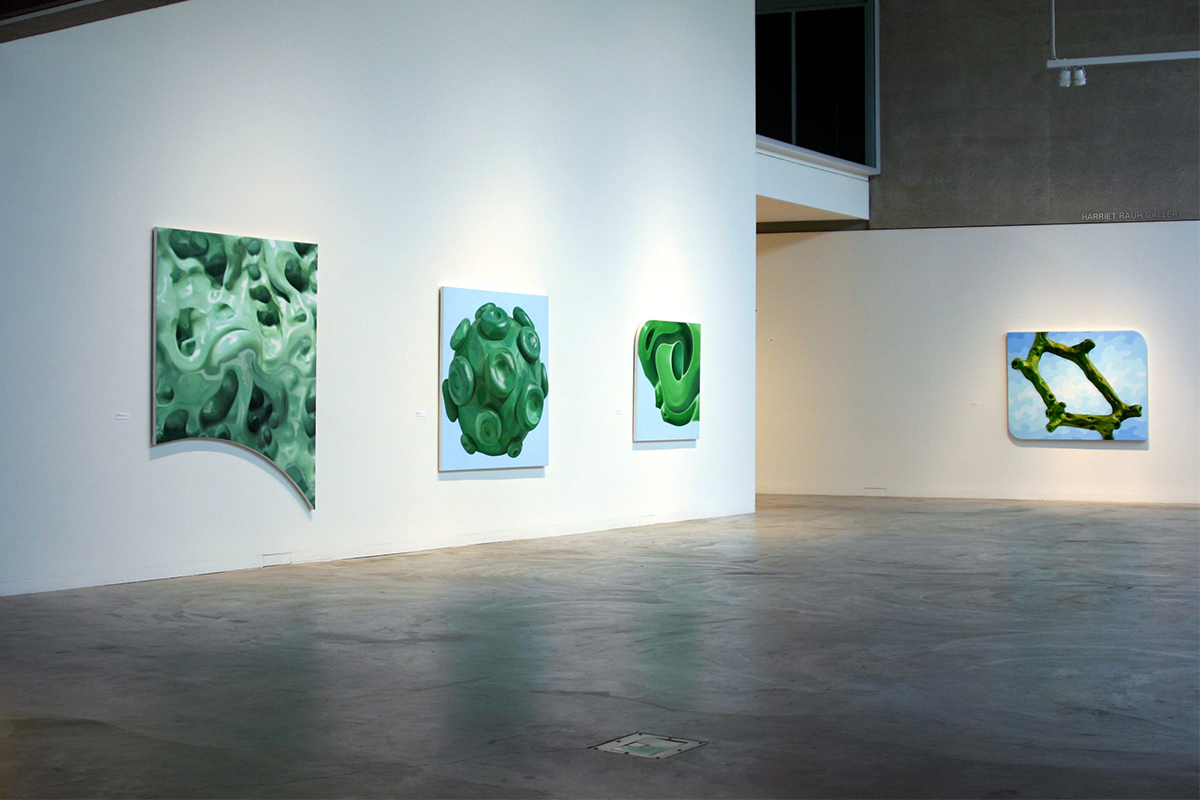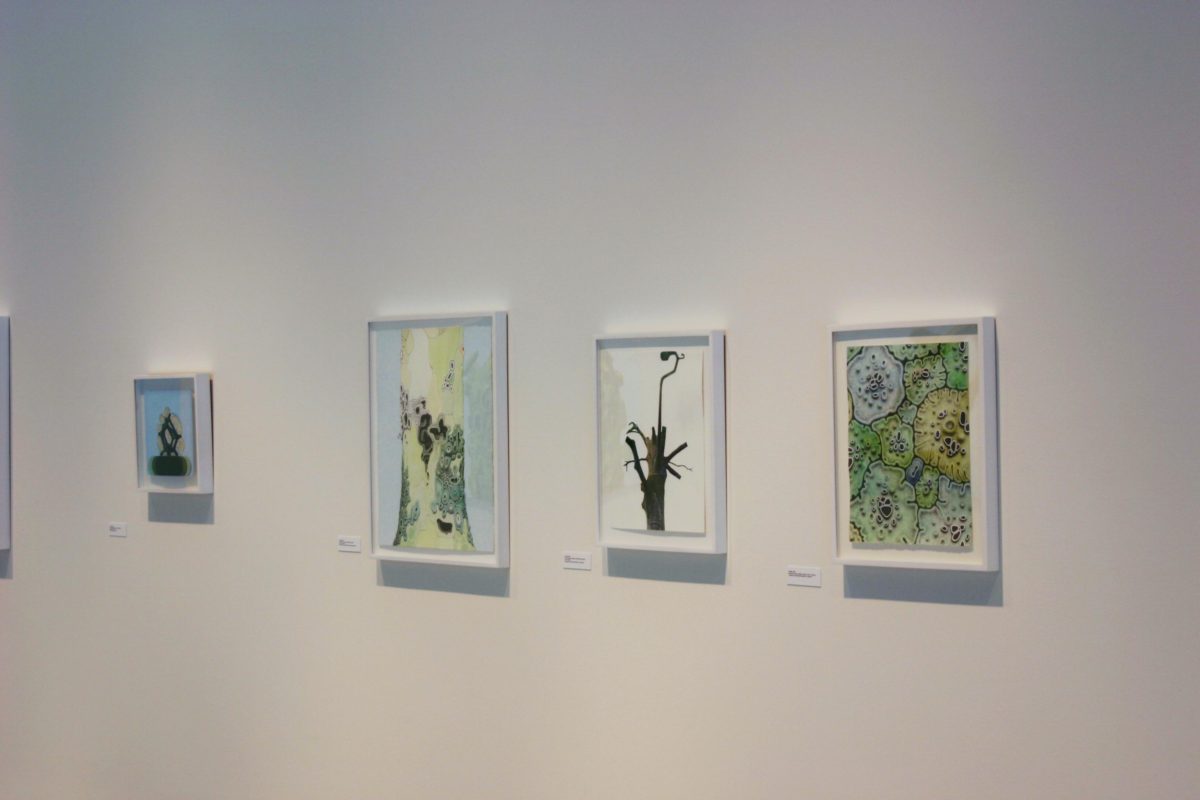For his first solo museum exhibition, Massachusetts and New York-based artist Alexander Ross presents paintings and drawings that play with scale, biomorphic forms, and the synthesis of abstraction and representation. As exemplified in the current survey of paintings and drawings dating from the past eight years, Ross’s works are layered with multiple references to organic and biological forms, science and nature, and linger simultaneously between life and artifice.
Ross’s process begins with his creation of plasticine models that suggest cellular structures, plants, scientific specimens, and landscapes. These hand-sculpted forms are essentially “blobs” of clay with crevasses and protrusions that have been shaped into various morphing forms and convey a variety of associations while at the same time remain abstract. Ross photographs the finished forms and then paints and draws from the photographs, which have been cropped and edited, thus further removing the models from their original state. Ross transcends his interpretations of the models from their three-dimensional form to two-dimensional representations on canvas and paper.
Known for his color palette of muted greens, grays, and blues, Ross’s sensual application of paint and labored surfaces convey a synthetic quality reminiscent of science-fiction and unearthly discoveries. At the same time the works evoke landscape and ecological elements found in the natural world. The forms rendered in the paintings look like computer generated images, emphasizing their otherworldliness. His shaped canvases suggest the remnants of the original sculpted forms and are evidence of their evolution from the three dimensional realm to an image on a flat surface. The large-scale works envelop the viewer, as if he or she is standing before a magnified cross-section of a natural specimen that has been dissected and carefully examined. The delicately rendered drawings appear as meticulously analyzed samples under a microscope.

